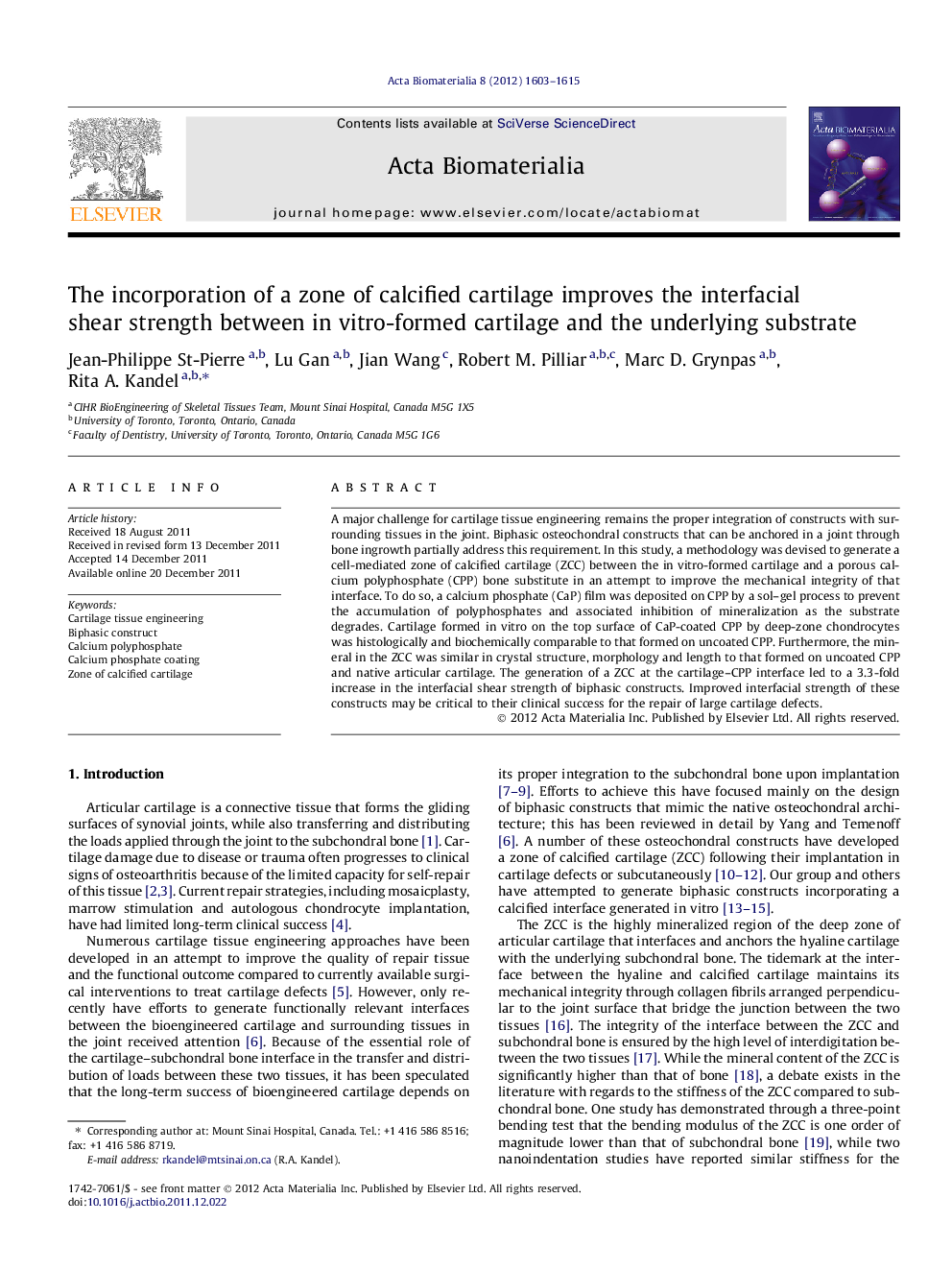| Article ID | Journal | Published Year | Pages | File Type |
|---|---|---|---|---|
| 1233 | Acta Biomaterialia | 2012 | 13 Pages |
A major challenge for cartilage tissue engineering remains the proper integration of constructs with surrounding tissues in the joint. Biphasic osteochondral constructs that can be anchored in a joint through bone ingrowth partially address this requirement. In this study, a methodology was devised to generate a cell-mediated zone of calcified cartilage (ZCC) between the in vitro-formed cartilage and a porous calcium polyphosphate (CPP) bone substitute in an attempt to improve the mechanical integrity of that interface. To do so, a calcium phosphate (CaP) film was deposited on CPP by a sol–gel process to prevent the accumulation of polyphosphates and associated inhibition of mineralization as the substrate degrades. Cartilage formed in vitro on the top surface of CaP-coated CPP by deep-zone chondrocytes was histologically and biochemically comparable to that formed on uncoated CPP. Furthermore, the mineral in the ZCC was similar in crystal structure, morphology and length to that formed on uncoated CPP and native articular cartilage. The generation of a ZCC at the cartilage–CPP interface led to a 3.3-fold increase in the interfacial shear strength of biphasic constructs. Improved interfacial strength of these constructs may be critical to their clinical success for the repair of large cartilage defects.
